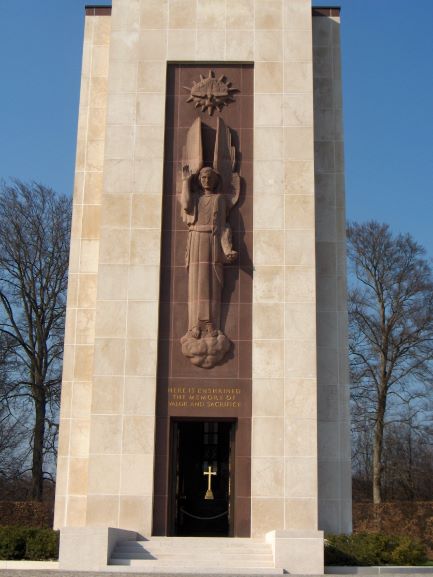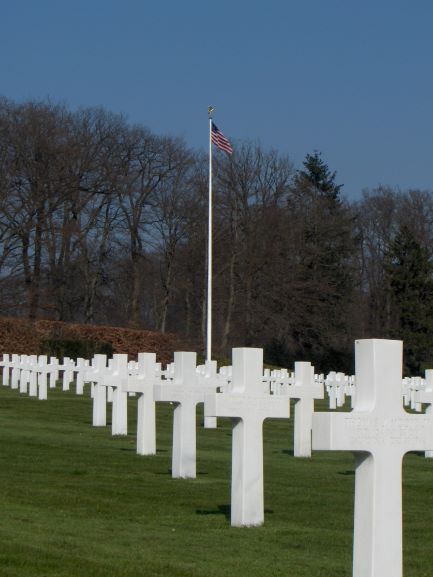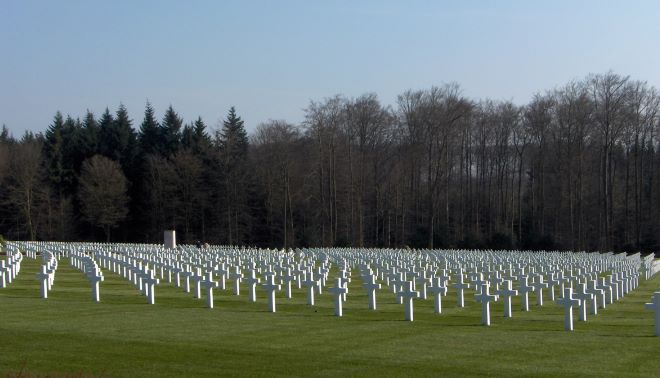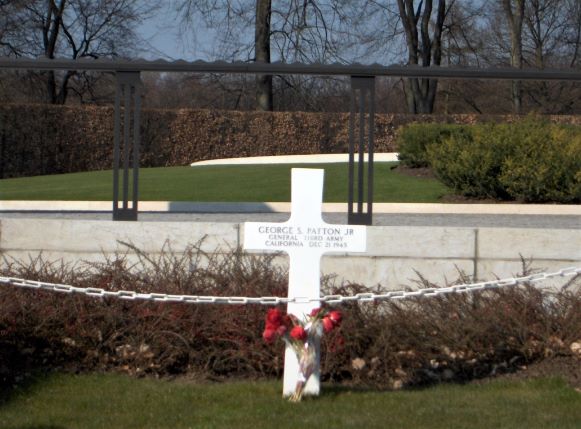Just outside the capital city of Luxembourg is Luxembourg American Cemetery. A tall, wrought iron entrance gate bears gilded laurel wreaths, the ancient award for valor. Over 17 acres of manicured lawn is surrounded by 33.5 acres of woods.

As we wandered throughout the cemetery, we learned so much about United States soldiers buried on European soil.
On the lower level of the terrace, two pylons face each other across a quote by Eisenhower about the sacrifice of military service members. The pylons display the battle movements in the western European Operations (on the right) and those related to the Battle of the Bulge (on the left). On the reverse of the maps, 371 names of those missing in action are inscribed. Twenty-three bronze rosettes identify service members who have been recovered since the inscriptions were made and now rest in known graves.

Sloping away from the terrace is the cemetery where 5,070 service members lie, many of whom lost their lives in the Battle of the Bulge and in the advance to the Rhine River. Others died in operations to liberate the country of Luxembourg. The design is a softly curving fan shape consisting of nine sections interspersed with four fountains, majestic trees, and expansive rose and rhododendron beds. It is a befittingly tranquil final resting place for these Americans who gave their all.

The cemetery was established on December 29, 1944 by the 609th Quartermaster Company of the U.S. Third Army while Allied Forces were stemming the enemy’s desperate Ardennes Offensive, one of the critical battles of World War II. The city of Luxembourg served as headquarters for General George S. Patton’s U.S. Third Army. The cemetery is the final resting place of General Patton.
